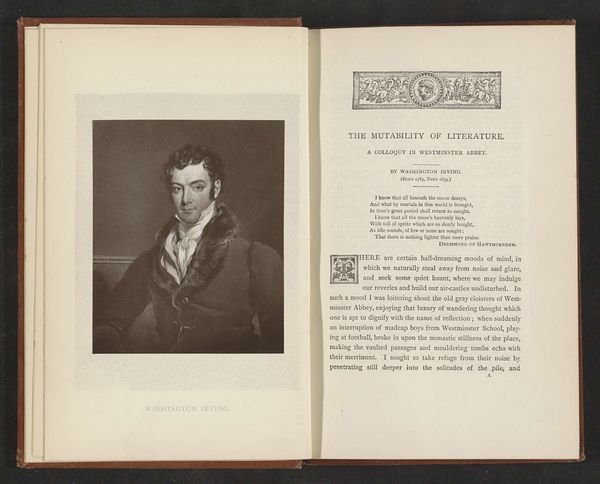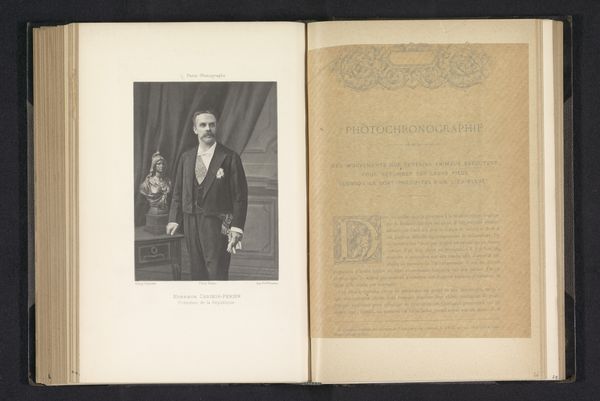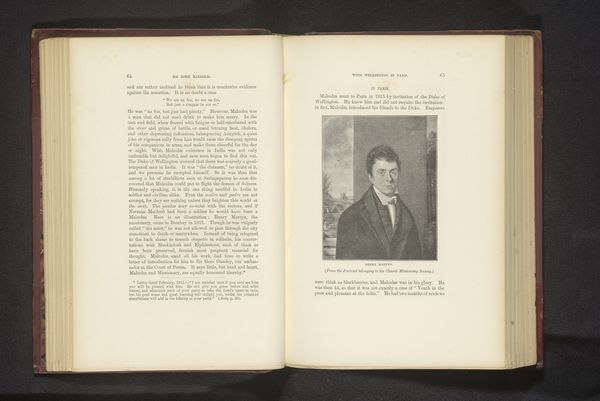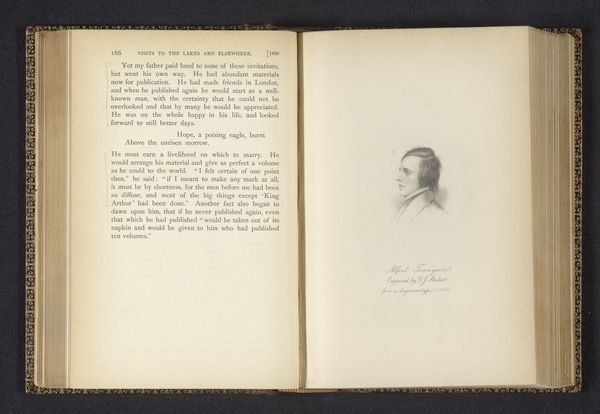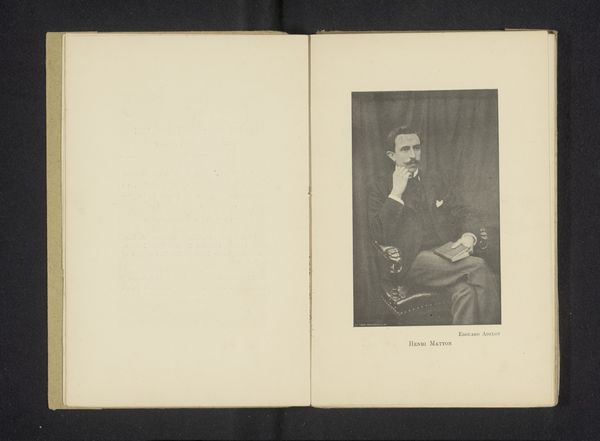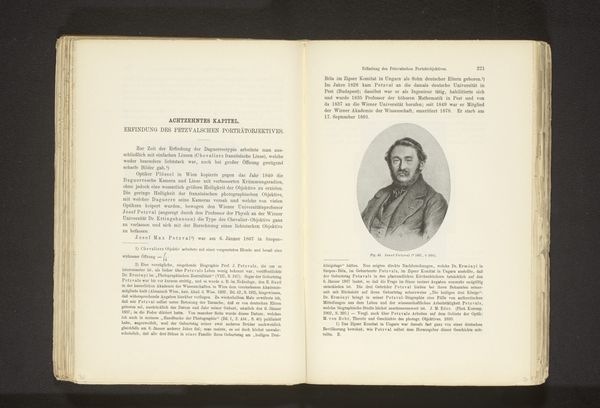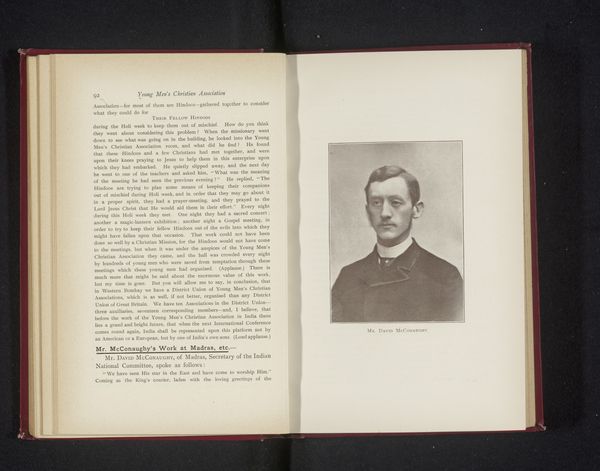
Reproductie van een geschilderd portret van Thomas de Quincey door Sir J.W. Gordon before 1886
0:00
0:00
print, paper, photography, engraving
#
portrait
# print
#
paper
#
photography
#
genre-painting
#
engraving
Dimensions: height 118 mm, width 94 mm
Copyright: Rijks Museum: Open Domain
Curator: Looking at this open book, we see a reproduction of a portrait of Thomas de Quincey. It’s based on a painting by Sir J.W. Gordon and rendered as a print before 1886, using photography and engraving on paper. Editor: He seems rather forlorn, doesn't he? It’s all grayscale, which amplifies the melancholy. The way he's posed in his chair makes him appear very small inside his own narrative. Curator: Considering De Quincey's own life, that sense of melancholy makes perfect sense. Think of his Confessions of an English Opium-Eater; a powerful, yet tragic life marked by addiction and introspection. This portrait could symbolize a pivotal moment of internal reflection. Editor: Ah, yes, a reflection indeed! It mirrors the self-imposed isolation found within those written confessions. I picture him contemplating life, just like Hamlet with his skull! But also, something about the reproduction, perhaps its slightly faded tone, gives it a feeling of something precious and hidden. Curator: Absolutely! This positioning of his image, inside of a book and alongside printed text, frames his portrait literally and figuratively with a specific context. The surrounding page—likely containing text about the art of conversation—adds an intriguing layer. Was de Quincey someone who was gifted with it, or found it a chore? Editor: Or did his most powerful dialogues exist inside his head, and thus reflected in this wistful stare? It brings out the conflict within that kind of individual genius... Curator: Indeed. His portrait as part of a printed book encourages questions around access to knowledge, personal narratives, and who gets memorialized—aspects which always carried intense social and political weight, then and now. Editor: Right. He stares back, a ghost on a page. Now, though, I see it also about fragility and remembrance… Thank you for offering that extra lens to appreciate him with!
Comments
No comments
Be the first to comment and join the conversation on the ultimate creative platform.
